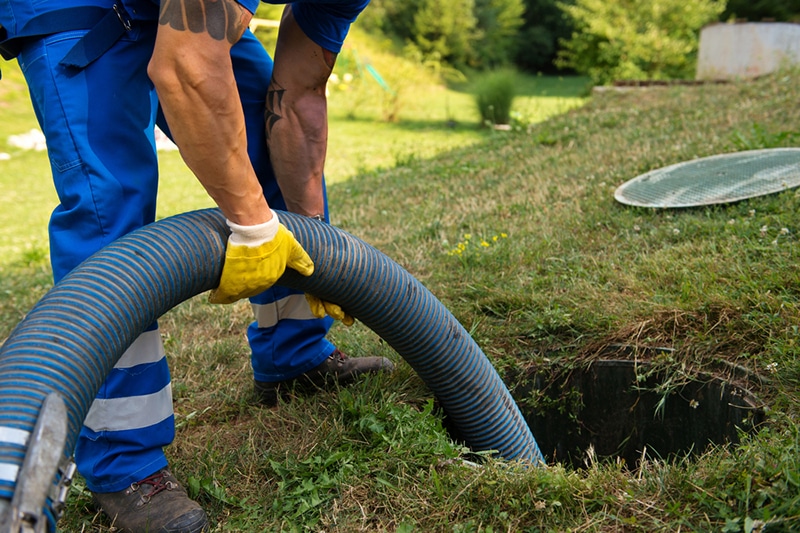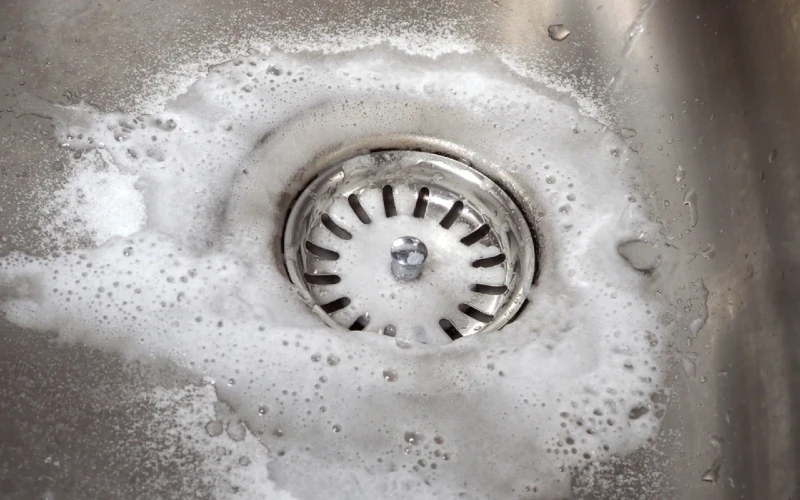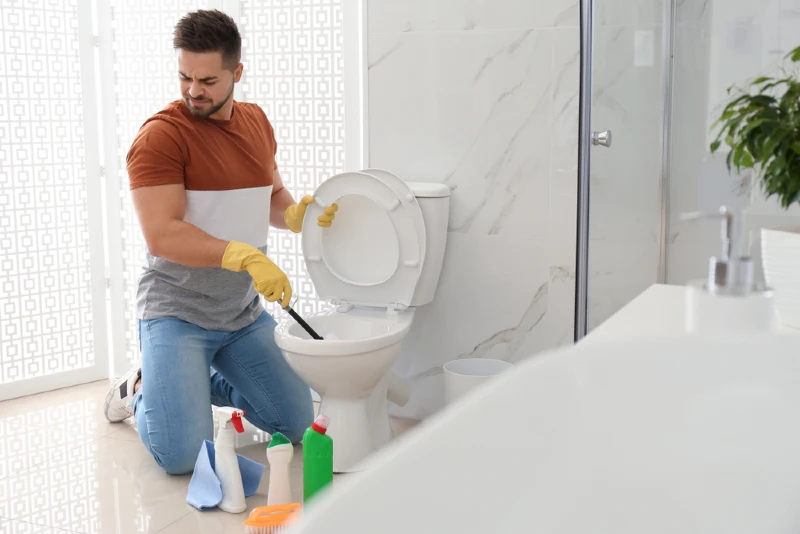Is CLR Safe for Septic Tanks? (Septic-Safe Treatment Products)
-
Jeff Weishaupt
- Last updated:

CLR is septic-safe, which means it will not harm or interfere with the bacteria in your septic tank. CLR neutralizes with water before reaching the septic system. Plus, it only uses environmentally friendly industries, which are safe on all drains, porcelain, and pipes.
However, since CLR is an acid-based cleaner, it’s important to understand the potential risks before using it. Below, we’ll discuss how to use CLR in a septic system safely.
What Is the CLR Healthy Septic System?
The CLR Healthy Septic System is an acid-based cleaning solution that breaks down and removes buildup and deposits in pipes, sinks, and toilets. It maintains the health of your septic system. The solution is EPA-approved and non-toxic, making it safe for use in septic tanks and plumbing systems.
The formulation lowers pH levels in the tank, helping prevent sludge buildup that can cause system malfunctions. It also kills bacteria and other germs.
While most other products contain preservatives and detergents, the CLR Healthy Septic System contains no harsh chemicals or pollutants The unique formulation only cleans and deodorizes but also helps extend the life of your septic system. Moreover, it does all this without harming the environment or leaving behind a residue.
How Does CLR Septic Work?

CLR septic has microbes that can break down organic matter, such as fats and proteins. Microbes that digest and consume the debris help keep the system working efficiently. The microbes form colonies and generate enzymes, which help break down the organic matter. It means that bacteria can break down substances such as grease, oil, and soap into their basic components.
It helps reduce the amount of buildup in the system, which can cause clogs or other problems. CLR septic systems also contain a special blend of bacteria that breaks down solids into smaller particles.
Is It Safe to Rinse CLR Down the Drain?
Since CLR is safe for pipes and drains, you can rinse it down the drain without any worry. The EPA’s Safer Choice Program recognizes it as a safe product that does not contain phosphates.
When using CLR, always follow the manufacturer’s instructions and observe all safety precautions. Wear gloves when handling CLR, and consider avoiding contact with the eyes, nose, and mouth.
Use CLR in a well-ventilated area, and open windows and doors before using it. Do not mix with other cleaners or chemicals, as this can create toxic fumes.
When Not to Use CLR
It’s not safe to use CLR on older tubs, tiles, and sinks. Since the CLR formula is highly acidic, it can corrode and damage certain materials. Don’t use it on any of the following surfaces:
- Aluminum
- Brass
- Corian
- Marble and travertine (natural stone)
- Formica
- Older porcelain or fiberglass tubs and sinks
- Copper
- Gold fixtures
- Lacquered metals
You should also not use CLR on galvanized metals, such as gutters, as it can cause corrosion. CLR is also not safe to use on clothing or any other fabric material, so keep it away from your laundry.
Do not use CLR on sealed, coated, and painted surfaces, as doing so could damage the sealant. Additionally, do not use it on rubber or plastic surfaces to prevent erosion.
Always check the product label for any specific warnings or cautions before use. When in doubt, test a small area first to ensure it won’t cause damage before cleaning the entire surface. If you’re not sure if CLR is safe to use on a certain surface, contact the manufacturer for information.
Safety Tips for Using CLR

- Don’t Use It in Unventilated Spaces
CLR is a strong chemical, so you should only use it in well-ventilated spaces. Don’t use CLR in an enclosed room or space with no windows.
- Don’t Let CLR Sit for Too Long
You should put on CLR for 2 minutes and no more. Leaving it on for longer can damage surfaces and may cause harm to your health.
- Rinse Surfaces After Use
After applying CLR, rinse the surface with clean water. It will help remove any residue and make sure your surfaces stay safe.
- Spot Test First
Since it’s acidic, CLR can sometimes damage certain surfaces, so it’s important to spot-test a small area before using it on the entire surface.
- Don’t Use Undiluted CLR
When using CLR, dilute the product before use. Never use CLR in its undiluted form, as it can damage surfaces. Instead, create a solution by mixing one part water and one part CLR.
- Don’t Put CLR in a Spray Bottle
When sprayed, CLR mists and the mist is an inhalation hazard that can cause serious injury or irritation. Should you choose to use CLR, apply it directly to the intended surface using a cloth, scrub brush, or sponge.
Conclusion
In conclusion, CLR is safe for the septic system, but it should be used with caution. Always wear gloves when handling CLR and follow the manufacturer’s instructions.
Never use CLR on surfaces made of aluminum, brass, copper, gold fixtures, Formica, or older porcelain and fiberglass tubs and sinks. Plus, dilute the product before use and never spray it in a mist. Finally, always spot-test a small area first and rinse the surface after using CLR.
- See also: CLR vs. Lime Away: Pros, Cons, & Verdict
Featured Image Credit: KaliAntye, Shutterstock
Contents
